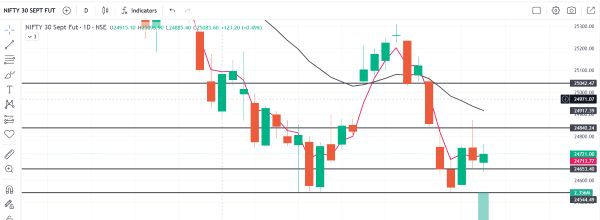Seasonal Trend Flow Charts for E-Commerce Traffic: A Complete Guide for Smarter Marketing
Understanding seasonal trend flow charts can transform your e-commerce business. These visual tools let you predict when customers are most active and help you plan better campaigns. Whether you’re new to e-commerce or scaling up, this guide explains how to use seasonal traffic trends to your full advantage.
Table of Contents
🔍 What Are Seasonal Trend Flow Charts?
Seasonal trend flow charts show how e-commerce traffic changes across seasons like summer sales, holiday spikes, or post-festival slumps. These charts help you visually interpret patterns in user behavior, purchases, and visits.
🧠 Why Should You Use Seasonal Trend Flow Charts?
You should use these charts because they give a clear, data-backed overview of when people are more likely to visit your site and buy your products. With this knowledge, you can:
Reduce ad spend during low periods
Launch ads when traffic is high
Restock inventory in time

👥 Who Benefits from Seasonal Traffic Insights?
These insights help:
| User Type | How It Helps Them |
| E-Commerce Owners | Time inventory, plan promotions |
| Marketers | Schedule campaigns and retargeting |
| SEO Experts | Align keyword strategy with peak seasons |
| Retail Managers | Balance staffing and logistics accordingly |
📊 How to Read Seasonal Trend Flow Charts – Step-by-Step
Step 1: Choose the Right Tool
You can use free or paid tools like:
- Google Trends
- SEMrush Traffic Analytics
- Shopify or WooCommerce dashboards
- SimilarWeb
Step 2: Identify Seasonal Patterns
Check when traffic increases. Look at:
- Holiday periods (e.g., Diwali, Christmas)
- End-of-season sales
- Back-to-school times
Step 3: Compare with Past Years
This helps spot repeating patterns. If sales rise in November, prepare in October.
Step 4: Segment Traffic Sources
See where the traffic comes from:
- Organic search
- Paid ads
- Social media
Step 5: Plan Accordingly
Based on these insights, adjust your strategy:
- Increase ad budget before traffic peak
- Offer discounts during off-season
🌦️ Monthly Seasonal Traffic Breakdown
| Season | Common Behavior | Strategy Tip |
| Winter | Holiday shopping spikes | Launch gift-related campaigns |
| Spring | Low to moderate, spring refresh purchases | Push wellness, home improvement |
| Summer | Travel, leisure, fashion sees high demand | Run seasonal flash sales |
| Fall | Back-to-school, pre-festive buzz | Bundle offers and school supplies |
✅ Positive Aspects of Using Seasonal Charts
- Better Planning: Avoid last-minute marketing decisions
- Higher ROI: Spend money when it brings the most returns
- Improved Inventory Management: Stock what’s needed, when needed
- Customer Satisfaction: Meet expectations at the right time
❌ Negative Aspects (and How to Overcome Them)
| Issue | How to Solve It |
| Data Misinterpretation | Cross-check with multiple years’ data |
| Over-reliance on Peaks | Keep steady traffic plans for off-peak months |
| Misaligned Content Planning | Sync content calendar with traffic trends |
| Tool Dependency | Learn to manually track trends through analytics |
💡 Real-Life Example: Boosting Sales with Seasonal Charts
Imagine you run an online bookstore. You observe from your seasonal chart that traffic spikes in September and December. Here’s what you do:
- Launch back-to-school discounts in September
- Promote gift bundles in December
- Reduce marketing spend in March when traffic is low
Result? Your ads convert better, stocks move faster, and customer satisfaction increases.
External Resources You Should Explore
- Think with Google: Retail Trends
- Shopify Seasonal Trends Report
- Statista’s E-Commerce Traffic Stats
🔁 Beginner’s Tip: Start Small and Observe
Don’t feel overwhelmed. You don’t need a full data team. Just pick:
- One product category
- One marketing channel
- One seasonal period
Observe how the traffic flows using Google Analytics or Trends. With time, you’ll master your entire sales calendar.
🎯 Actionable Takeaways
- Always map last year’s seasonal trend before planning.
- Use Google Trends for keyword + seasonal demand alignment.
- Invest more in ad spend 2–3 weeks before expected spikes.
- Create content calendars around upcoming seasonal themes.
- Monitor bounce rate during off-season — adjust UX accordingly.
FAQ: Seasonal Trend Flow Charts in E-Commerce
Q1: Can I use seasonal charts if my store is new?
Yes. Use Google Trends or Shopify Insights to study your niche’s seasonal behavior, even if your data is limited.
Q2: Do all e-commerce categories have the same seasonality?
No. Electronics peak during festive sales, while fitness spikes in January.
Q3: What if I get steady traffic year-round?
That’s great! Still, you can amplify during peaks using strategic marketing.
Q4: How often should I review seasonal trends?
Ideally, quarterly. But before every major campaign, take a look again.
Q5: Are trend charts better than real-time analytics?
They complement each other. Use seasonal trends for planning, and real-time analytics for execution.
✅ Conclusion: Let the Seasons Guide You
Seasonal trend flow charts are not just graphs. They are actionable roadmaps for your e-commerce journey. When you learn to read and react to them, you stay ahead of the curve. Whether you’re launching a campaign, managing stock, or creating content, seasonal awareness makes everything sharper and smarter.
So, start today. Let the seasons shape your sales strategy—and watch your business bloom all year round.
optimize e-commerce campaigns
Top 7 Technical Indicators for Swing Trading You Must Know [2025 Guide]
